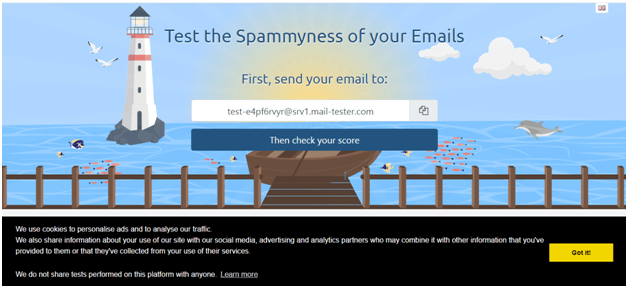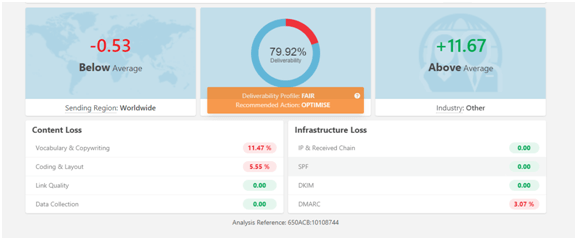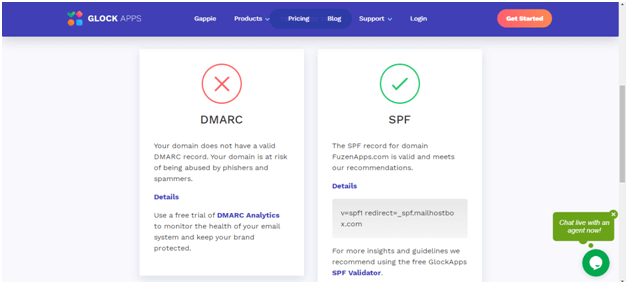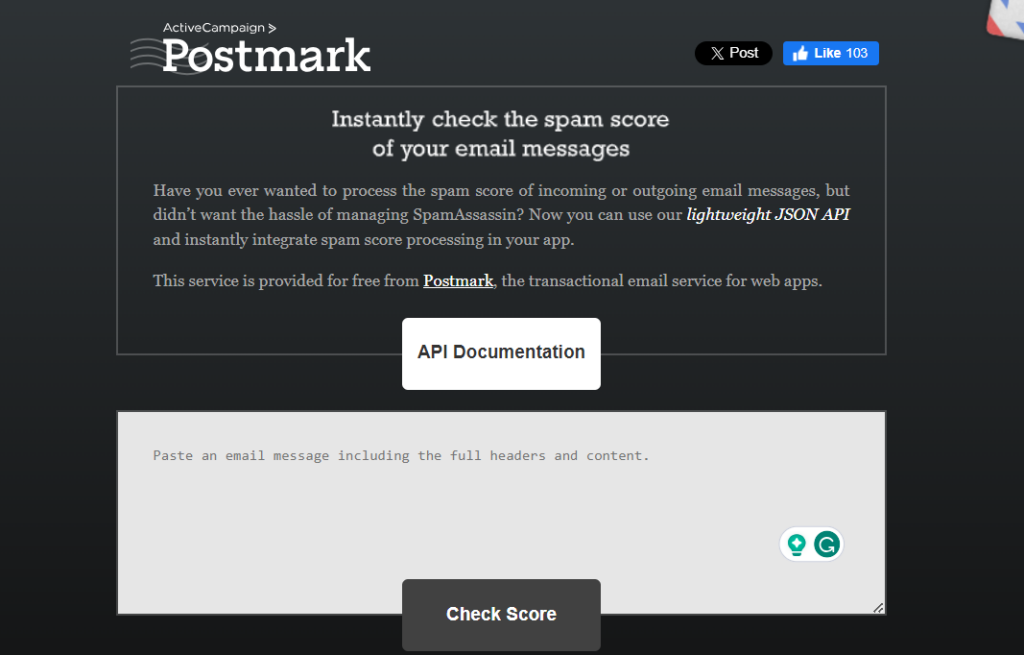Email marketing continues to be a critical component of any successful marketing strategy. Hence, ensuring that your emails reach the intended recipients’ inboxes has become more challenging than ever.
Also, with ever-evolving spam filters, changing email client settings, and stricter regulations, testing email deliverability has become a crucial step for email marketers to ensure their messages are not lost in the sea of spam.
But how do you test email deliverability?
In this post, we will explore the same and also look at some tips to improve your email deliverability.
So, let’s get to the point.
Table of contents
1. How to test email deliverability?
2. Tools to test email deliverability
2.1 Mailtester
2.2 SendForensics
2.3 GlockApps
2.4 MX Toolbox
2.5 SpamCheck
3. Simple tips to improve email deliverability
4. FAQs
How to test email deliverability?
Considering how important email deliverability is to the success of your email campaigns, the need to regularly monitor email deliverability becomes quite obvious.
So how can you go about testing the deliverability of your emails? Which factors are important to test and do we have any tools available to test them?
Regularly monitor email opening rates
The simplest thing that you can (and must) do to check email deliverability is to regularly monitor the opening rates for your email campaigns.
Since we cannot track how many emails reach INBOX, we can measure – how many emails are getting opened. Email outreach tools like safemailer, provide detailed analytics of how many emails are getting opened and who are opening them.
Track these numbers on regular basis to ensure they are steady. Stable opening rates will indicate that your email deliverability and sender reputation is also stable.
The moment you see any significant drop in email opening rates, you can use any of the following tools to check the deliverability, spam score and sender score of your emails.
Sender Authentication Protocols
Ensure your emails reach their destination by using sender authentication protocols. These are like security badges that verify you’re a trusted sender. SPF, DKIM, and DMARC play this role.
SPF lists your authorized servers, DKIM adds a unique signature, and DMARC adds an extra layer of protection.
Think of them as your email’s bodyguards against spam filters.
Email Content
What you say in your emails matters for deliverability. Words or phrases can trigger spam filters or lower engagement.
Avoid too many capital letters, exclamation marks, or words like “free” and “click here.” Personalize your emails, keep language clear and concise, and include a direct call to action. It’s like speaking the language of inbox harmony to ensure your emails resonate positively.
Sender Reputation
Your email rep is crucial. Think of it like your online reputation score. Maintain a positive sender rep by steering clear of spam triggers, handling bounces, and respecting unsubscribe requests.
It’s the online version of being a reliable and respected communicator.
Subject Line
Crafting a subject line is like the headline of your email story. Test different ones to see what piques interest.
Avoid spammy words or tactics that might trip filters. Keep it clear, concise, and engaging. Think of it as the invitation to your email party – intriguing enough to get people through the door.
Tools to check email deliverability
1. Mailtester
This is our favorite tool to check the deliverability and sender reputation for our email campaigns at SafeMailer.
Created by geeky email software engineers, it’s a cheap, simple, and efficient way to quickly test the quality of your newsletter.

MailTester will analyze your message, mail server & sending IP. It will then generate a detailed report of what’s configured properly and what’s not. Your result will be accessible for 7 days with the free version, or for 30 days if you choose a paid plan and create an account.

If you occasionally perform manual tests, you can access their web-interface for free, without even creating an account.
2. SendForensics
They offer a free email deliverability test. You just need to sign up & add the unique email address provided by them to your mailing list for real time deliverability testing.

They first advise any correction of your sending infrastructure, then they check your content & give you a final score.
There is no limit to the number of email tests you can send to SendForensics to test, so it is not an issue to test every single campaign prior to launch to maximize the deliverability.
3. GlockApps
GlockApps is a email deliverability and spam test tool in one place.
It shows you delivery results in real-time for each seed list account. A seed list is a test ID and a list of email addresses across the top ISPs – Gmail, Hotmail, Outlook, Yahoo, AOL, and others.

You can see where your email has landed. In the Inbox or Spam folder or Promotional/Social tabs, or was never delivered.
GlockApps Bounce Monitor, a tool that tracks bounced emails & collects all the analytics, can be integrated with Amazon SES, SparkPost, SendGrid, and Mailgun.
4. MX Toolbox
MX Toolbox helps you make sure your emails reach people’s inboxes. It looks at different settings that affect email delivery. For example, how your email address is set up and protected.
It checks if everything is configured correctly to prevent your emails from being marked as spam or not delivered.

This tool gives you a clear view of any problems that could stop your emails from reaching their destination. It checks if your email address is on any blacklists and helps fix any issues with how your emails are sent.
5. SpamCheck
SpamCheck checks if your emails might be seen as spam by email filters. It looks at the words you use, how your email looks and other details that could make email filters think your email isn’t wanted.
By using SpamCheck, you can see if anything in your email might make it more likely to end up in the spam folder.

It helps you change your email so that it’s more likely to go straight to someone’s inbox instead.
There are a few more tools like Folderly, SendPost, etc. that will help you check the technical aspects of the deliverability of your emails. These may be useful when you are operating at scale and want to take care of all technical aspects of email deliverability and not just cold email automation.
Here’s a more detailed list of tools that you can use to test email deliverability for your email outreach campaigns.
Simple tips to improve email deliverability
- Never buy a mailing lists. You don’t know of the quality or authenticity of these emails and you will end up with too many bounced emails.
- Set up separate domain and email addresses for marketing purposes. You minimize the risk of damaging your main domain reputation, if your emails get marked as spam.
- Avoid sending bulk email blasts. They increase the chance of getting filtered by ISPs.
- Invest more time and thought in writing emails that your audience will find interesting. Otherwise, what’s even the point of sending those emails anyway?
- Take care to avoid certain spam trigger words and phrases in your email copy.
These tips can help you improve the deliverability of your emails. However, you will also need to test it on a regular basis to ensure it doesn’t slip.
FAQs
Q. What factors affect email deliverability?
A: Several factors can affect email deliverability, including the content of the email, sender reputation, email authentication, email list hygiene, and subscriber engagement.
Q. What is a sender reputation, and how does it affect email deliverability?
A: A sender reputation is a score that internet service providers (ISPs) and email filters use to determine whether an email is spammy or not. The sender reputation is based on various factors, such as the email volume, bounce rate, spam complaints, and engagement rate. A good sender reputation can help improve email deliverability. While a poor reputation can cause emails to be marked as spam or blocked entirely.
Q. What should I do if my emails are not getting delivered to the inbox?
A: If your emails are not getting delivered to the inbox, you can check your sender reputation, email authentication, and email content to see if there are any issues. You can also contact your email service provider or the recipient’s email service provider to resolve any deliverability issues. Additionally, you can try segmenting your email list, improving your email content, and cleaning your email list to improve deliverability.

Leave a Reply